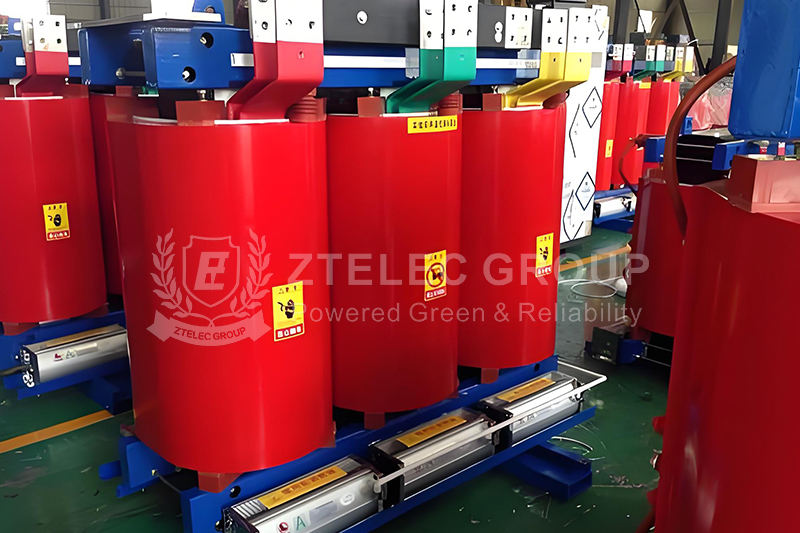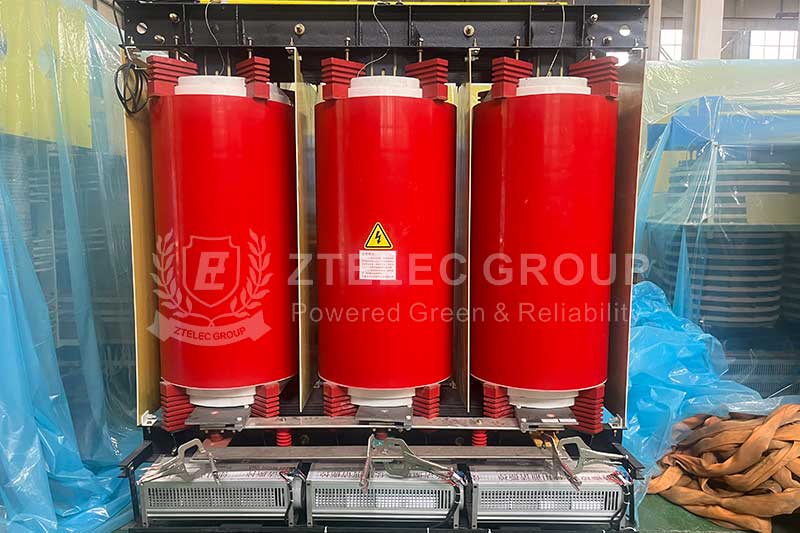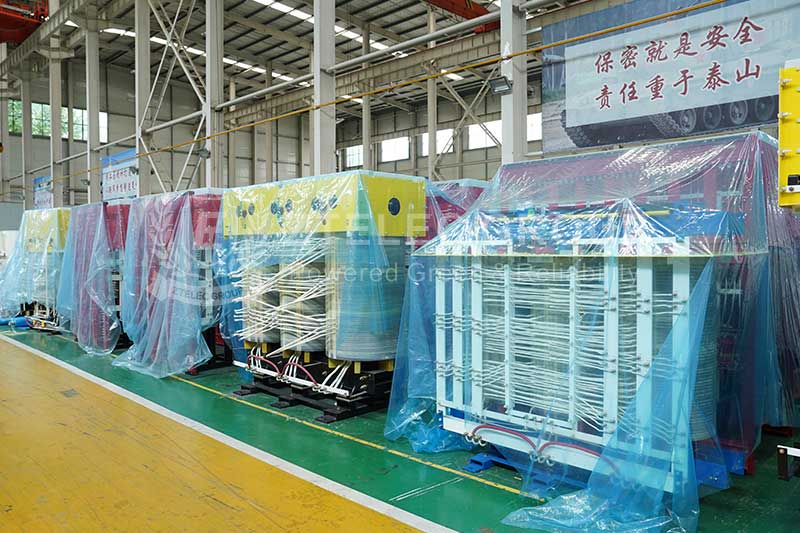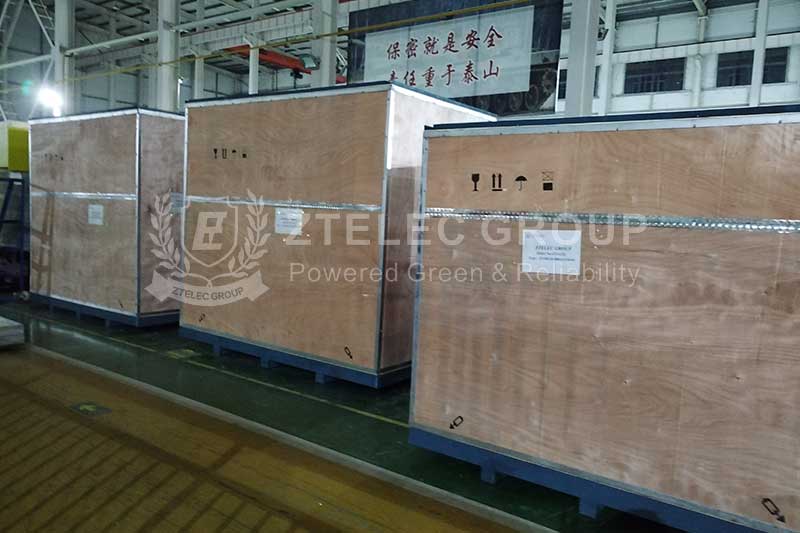In the context of todays global energy shortages and increasingly stringent environmental protection requirements, the energy efficiency of electrical equipment has become an important criterion for measuring its value. As an efficient and energy-saving power conversion device, dry-type transformers, with their unique technical features and environmental advantages, are gradually replacing traditional oil-immersed transformers and becoming the preferred choice in industrial, commercial, and public facility sectors. This article will comprehensively analyze the multiple energy-saving advantages of dry-type transformers, from their working principles to practical applications, and from economic benefits to environmental contributions, revealing how this green power device helps enterprises reduce energy consumption costs while fulfilling their social responsibilities.
Energy-Saving Principles and Technical Foundations of Dry-Type Transformers
The core reason why dry-type transformers excel in energy saving lies in their unique working principles and advanced technical design. Unlike traditional oil-immersed transformers that rely on transformer oil for insulation and cooling, dry-type transformers use air as the cooling medium and achieve efficient power conversion through a solid insulation system. This design fundamentally eliminates energy losses caused by oil media and avoids efficiency degradation due to oil aging.
In terms of material selection, modern dry-type transformers use high-performance silicon steel sheets to make the core, which has extremely low hysteresis and eddy current loss characteristics. The windings are made of high-purity copper or aluminum conductors, combined with vacuum resin casting technology to form a robust insulation structure. This not only enhances mechanical strength but also significantly reduces copper losses caused by conductor resistance. For example, the SCB13 energy-saving dry-type transformer has an energy efficiency 5%-10% higher than traditional oil-immersed transformers, saving a substantial amount of electricity over long-term operation.
Optimization of the thermal management system is also key to the energy-saving performance of dry-type transformers. Through the design of natural convection cooling or forced air cooling systems, dry-type transformers can automatically adjust cooling efficiency according to the load situation, avoiding unnecessary energy waste. Some advanced models are equipped with intelligent temperature control devices that monitor winding temperatures in real time and adjust cooling intensity to ensure that the transformer always operates at the optimal energy efficiency range.

Specific Energy-Efficiency Improvements of Dry-Type Transformers
Dry-type transformers demonstrate significant energy-saving advantages in practical operation, which are directly translated into economic benefits for users. The most noticeable advantage is the substantial reduction in iron and copper losses. Thanks to the use of high-quality electromagnetic materials and optimized design, the no-load loss (iron loss) of dry-type transformers is 15%-20% lower than that of traditional transformers, and the load loss (copper loss) is reduced by 10%-15%. This dual-loss reduction feature allows them to maintain high efficiency in round-the-clock operation, making them particularly suitable for applications with significant load variations.
Operational stability is another important factor contributing to the energy-saving performance of dry-type transformers. Compared with oil-immersed transformers, dry-type transformers have stronger anti-interference and overload capacity. Their solid insulation system does not degrade in performance due to temperature fluctuations or mechanical vibrations, ensuring stable conversion efficiency over the long term. Even in harsh environments or sudden overload situations, dry-type transformers can continue to operate normally, avoiding energy waste and production interruptions caused by equipment failures.
Calculations show that a 1000KVA energy-saving dry-type transformer operating at a 60% load rate, with only the lighting load part (assuming 300KW, power factor 0.9) working for 10 hours a day, and with a commercial electricity price of 1 RMB per kWh, the daily electricity cost is 3000 RMB. If an energy-saving dry-type transformer with a 10% power-saving rate is used, 300 RMB can be saved daily, and approximately 109,500 RMB can be saved in a year. Although the initial investment for an energy-saving dry-type transformer is about 50,000 RMB higher than that of a regular model, the investment difference can be recovered through electricity savings in less than half a year, with significant long-term economic benefits.
Environmental Characteristics and Synergistic Effects with Energy Saving of Dry-Type Transformers
The energy-saving advantages of dry-type transformers are inseparable from their environmental characteristics, forming a virtuous cycle that enhances the overall value of the equipment. The most prominent environmental feature is the completely oil-free design, which completely eliminates the risk of transformer oil leakage contaminating soil and water sources, and also avoids the environmental burden of waste transformer oil treatment. This feature makes dry-type transformers an ideal choice for places with strict environmental requirements, such as hospitals, schools, and shopping malls.
In terms of material recyclability, dry-type transformers also perform excellently. The materials used, such as copper, aluminum, silicon steel, and epoxy resin, are mostly recyclable and reusable, and no harmful waste is generated during disposal. At the same time, the increased energy efficiency reduces the demand for power generation, indirectly lowering the pollutant emissions from power plants. It is estimated that a high-efficiency dry-type transformer can reduce tens of tons of carbon dioxide emissions over its life cycle, making a positive contribution to mitigating climate change.
The fire safety of dry-type transformers also ensures their energy-saving operation. Traditional oil-immersed transformers, when faulty, can easily cause serious fires due to the flammable transformer oil, not only wasting energy but also leading to large-scale power outages. In contrast, dry-type transformers use flame-retardant insulating materials and are less likely to catch fire even under high load or short-circuit conditions, ensuring the continuous and stable operation of the power system. This inherent safety reduces energy interruption losses caused by fires and improves energy utilization efficiency at the system level.

Energy-Saving Application Cases of Dry-Type Transformers in Different Fields
The energy-saving characteristics of dry-type transformers have led to their widespread application in various fields, each showing unique energy-saving value. In the industrial manufacturing sector, especially in high-energy-consuming industries such as metallurgy and chemical engineering, the efficient and stable operation of dry-type transformers can significantly reduce production costs. A steel enterprise that replaced its oil-immersed transformers with SCB13 type dry-type transformers achieved an annual power saving of 1.2 million kWh, equivalent to reducing the consumption of about 400 tons of standard coal.
Commercial buildings are another important application area for dry-type transformers. Malls, hotels, office buildings, and other places have large power load fluctuations and high requirements for power supply quality. Dry-type transformers, with their fast response capability and high energy efficiency, have achieved significant energy-saving effects in these places. A large commercial complex in Beijing, after adopting dry-type transformers, not only solved the problems of high noise and heat generation of traditional transformers but also improved the overall energy efficiency of the power distribution system by 8%, saving more than 500,000 RMB in electricity costs per year.
In the renewable energy sector, the energy-saving advantages of dry-type transformers are fully utilized. Wind power generation and photovoltaic power stations are usually located in remote areas where maintenance is inconvenient and the reliability of equipment is highly required. The maintenance-free feature of dry-type transformers, which do not require regular oil changes, is very suitable for such applications, and their high energy efficiency ensures the maximization of renewable energy utilization. A 200MW photovoltaic power station in Jiangsu, which uses dry-type transformers exclusively, can transport about 3 million kWh more clean electricity per year compared to traditional solutions.
Data centers, as the infrastructure of the digital economy, have extremely strict requirements for the stability and efficiency of power supply. Dry-type transformers, with their high efficiency, reliability, and simple maintenance, have become the core equipment of data center power distribution systems. An internet giant that used dry-type transformers in its newly built data center not only achieved an industry-leading PUE (Power Usage Effectiveness) value of below 1.3 but also further optimized the transformer operation efficiency through an intelligent monitoring system.
Future Development Trends and Selection Suggestions
With technological progress and policy promotion, the energy-saving potential of dry-type transformers will be further unleashed. The introduction of intelligent technology will enable dry-type transformers to achieve more precise energy efficiency management. Through built-in sensors and IoT connections, future dry-type transformers will be able to monitor load changes, temperature distribution, and energy consumption data in real time, automatically adjusting operating parameters to reach the optimal energy efficiency state. Some leading manufacturers have already begun to offer intelligent dry-type transformers with energy efficiency analysis functions to help users identify energy-saving opportunities.
In terms of new material applications, the commercialization of innovative technologies such as amorphous alloy cores and high-temperature superconducting windings will significantly improve the energy efficiency of dry-type transformers. Experimental data shows that dry-type transformers with amorphous alloy cores can reduce no-load losses by 70%-80% compared to traditional silicon steel sheets. Although the initial cost is higher, the investment payback period in high-load applications can be shortened to 3-5 years. With large-scale production, the prices of these high-performance dry-type transformers will become more competitive.
For users planning to purchase transformers, it is recommended to evaluate the value of dry-type transformers from a total life cycle cost perspective. Although the initial investment may be 10%-20% higher than that of oil-immersed transformers, considering factors such as electricity savings, reduced maintenance costs, and extended equipment life, the total cost of ownership of dry-type transformers is usually lower. When selecting specific models, attention should be paid to the energy efficiency grade of the product (such as SCB13, SCB14, etc












Leave A Comment